According to the office of the Denver County Assessor, between 2021 and 2023, the median assessed value of all Denver residences (single-family, townhomes, and condos) increased by 33%. In contrast, Downtown Denver (or more specifically the Central Business District) is in a tough spot. In that same time period, the median change in assessed value of downtown office space increased by half a percent. To speak plainly, downtown Denver is among the worst downtowns in North America for foot traffic recovery and return to the office, and the firm Cushman and Wakefield projects that the Denver metro is on pace for a net increase in office vacancy by the end of this year. This dismal state of affairs have many people asking, “Why don’t we just turn the Downtown offices into housing?”
Well, we are! The drumbeat of bad news muffles the equally insistent tempo of proposals to convert old offices into housing. Though adaptive reuse is a little less visible than tower cranes and Tyvek® CommercialWrap®, the importance of this transformation of Downtown from the inside-out deserves coverage on this blog. There is so much to read on this topic, why certain buildings favor conversion and why others won’t, but a sampling of projects in Denver currently underway show three desirable qualities in the downtown adaptive reuse projects of 2024: an old building on or near the 16th Street Mall which is mostly vacant. Additionally, the proposed expansion of the Downtown Denver Authority would bring new public money to bear for these expensive conversions. Though there isn’t active construction underway at any of these sites, we felt it was worth trying to capture their presence, history, and contribution to the downtown fabric in photos.
COMPLETED PROJECTS
The Art Studios. Making a presence in the former Art Institute of Colorado Building, JNS Architecture designed the conversion and reuse of this prominent corner building. But these studios aren’t tiny—with the high ceiling heights typical of an office building, most of the built-in beds in the studios are lofted, then storage is placed underneath the sleeping area. This adaptive reuse of the old Art Institute building also made space for new digs for the Colorado Photographic Arts Center. And if the parking count causes alarm, that’s because the rainbow-painted parking garage next door is part of the project. At one point, a new apartment building on top of that garage was proposed, but no progress have been made on that in the last few years. No new parking was built for this project.
| Project Description | Developer | Architect | Contractor |
|---|---|---|---|
| 10 stories | 3,528 sf arts center | 194 apt homes | 245 (v) & 165 (b) parking | Nichols Partnership | Johnson Nathan Strohe | Sprung Construction |
PROPOSED
Denver Dry Goods. For this historic building at the corner of 16th Street and California Street, constructed in 1889 and expanded in 1906, a change of use is just the latest in an ongoing story of renovation and reuse. In the 1990s, it took involvement from the Denver Urban Renewal Authority to provide financing to revitalize this historic structure. Today, 250,000 square feet of the building serves residents of various condos and affordable apartments, while the rest is used as retail and offices. With this most recent proposal, the remaining the office space would be converted and 55 affordable homes added. This project uses LIHTC funding, so the story of public money supporting Denver Dry Goods continues. This is just such an incredible building, historic and charming; not every adaptive reuse in Denver will revitalize such a marquis building or location, but they’re in good company with the Denver Dry Goods building.
| Project Description | Developer | Architect | Most Recent Activity |
|---|---|---|---|
| 6 stories | 37,258 sq ft retail | 106 apt homes | 43 condos | 0 (v) & 32 (b) parking | Perry Rose, LLC | OZ Architecture | Formal SDP (2024-03-28) |
Petroleum Building. Another building along the 16th Street Mall, right where it meets Broadway and Cleveland Place, this proposal is actually the furthest along, proposed in the halcyon office year of 2021, when the Denver Metro saw 1 million square feet of new office delivered to market. The Petroleum Building has its own unique history (it was the tallest building in the city when it was built in the 1950s) but with the prominent placement at the end of the 16th Street Mall, and the project’s visibility for commuters on Broadway, this is an important project to signal the promise of office-to-residential conversion. Once the Broadway bike lane is extended north of 7th Avenue, it will be hard to find a part of Denver that is as friendly to no-car households as this location. No change is proposed for the ground-floor retail, which is great for me personally, as I often get a Jimmy Johns sandwich for lunch at work.
| Project Description | Developer | Architect | Most Recent Activity |
|---|---|---|---|
| 14 stories | 3,855 sq ft retail | 177 apt homes | 0 (v) & 33 (b) parking | Borst & Company | Gensler | Formal SDP (2024-02-26) |
The George. One of two historic buildings at 16th and Champa proposed to be converted to residential, the Symes Building was built in 1906. This proposal ran into snags with Denver Water and had trouble with DOTI due to the encroachment on the sidewalk of historic door openings (you can’t make this bureaucracy up). They recently filed to re-open the project and are back on track with new submittals. This building features ample retail space on the 16th Street Mall, most recently occupied by Famous Footwear, a 7-Eleven, and an Edible Arrangements shop. It also features a lot of bike parking, and 0 vehicle parking, like all other projects on the list.
| Project Description | Developer | Architect | Most Recent Activity |
|---|---|---|---|
| 8 stories | 12,640 sq ft retail | 116 apt homes | 0 (v) & 127 (b) parking | Massandra Harbor George, LLC | Venture Architecture | Formal SDP (2024-05-01) |
University Building. The most recent concept to arrive in Denver’s permitting system for an adaptive reuse, the University Building was constructed in 1911. It pairs nicely with the other historic building proposed to add residences right at 16th Street Mall and Champa Street. The University Building is quite tall, and I found it charming to see its corniced 12th-floor poking above the other buildings on 16th Street Mall as I took photos of the other projects. Of note, conversion of this building requires the construction of a new 12-story pressurized egress stair, 6 stories of which will be visible above the next building over on Champa Street. There won’t be new vehicle parking, but the bike parking is still in flux. As of the initial concept submittal, it seems the developers simply forgot to include bike parking,
| Project Description | Developer | Architect | Most Recent Activity |
|---|---|---|---|
| 12 stories | 12,116 sq ft retail | 106 apt homes | 0 (v) & 0 (b) parking | 910 Associates |
ShopWorks Architecture |
Concept Plan (2024-05-31) |
475 17th Street. Our only departure from 16th Street Mall is an otherwise unassuming 1973 building by notable Denver architect William Muchow. I would imagine an office building like this represents the next phase in office-to-residential conversions, as this is not a historic landmark, so it would be possible to demolish this building and build something new at the site. If we wish to avoid a wave of demolitions downtown, as some do, a project as unremarkable as 475 17th Street needs to succeed. It has many merits, as it is tall but slender; the building graces a very pleasant intersection in the heart of the CBD, and there are healthy, mature trees along the building’s frontage. 17th Street is much more friendly to cyclists and transit riders than it used to be, and residents might jump at the opportunity to live within steps of the Brown Palace, especially seeing as 2/3rds of the homes created would be restricted to those who make 80% AMI or less.
| Project Description | Developer | Architect | Most Recent Activity |
|---|---|---|---|
| 16 stories | 2,577 sq ft retail | 210 apt homes | 0 (v) & 100 (b) parking | Revesco Properties | Davis Partnership Architects | Concept Plan (2024-02-02) |
CONCLUSION
If all these projects were completed today, there would be an additional 664 homes in Upper Downtown at the cost of roughly 450,000 square feet of office space. This represents a healthy, normal process. While none of these projects will modify the Denver skyline, isn’t the point of infill turning single-use spaces into something more? From parking lot to homes, from empty sky above small places to a tower where people can make a life for themselves. In this regard, adaptive reuse is an exciting development to see come out of the pandemic, and yet another life brought to some of our most charming, historic buildings downtown.
About the author:
Andy Cushen is a car-free urbanist living and working in Denver; his reporting and analysis of the construction boom in Denver neighborhoods can be found under the handle @BuildupDenver on Twitter. As part of the DenverInfill team, Andy covers neighborhoods north and west of I-25 (such as the Highlands, Sun Valley, and West Colfax) and RTD rail stops with significant developments nearby. He co-hosts the DenverUrbanism podcast along with James Warren.























































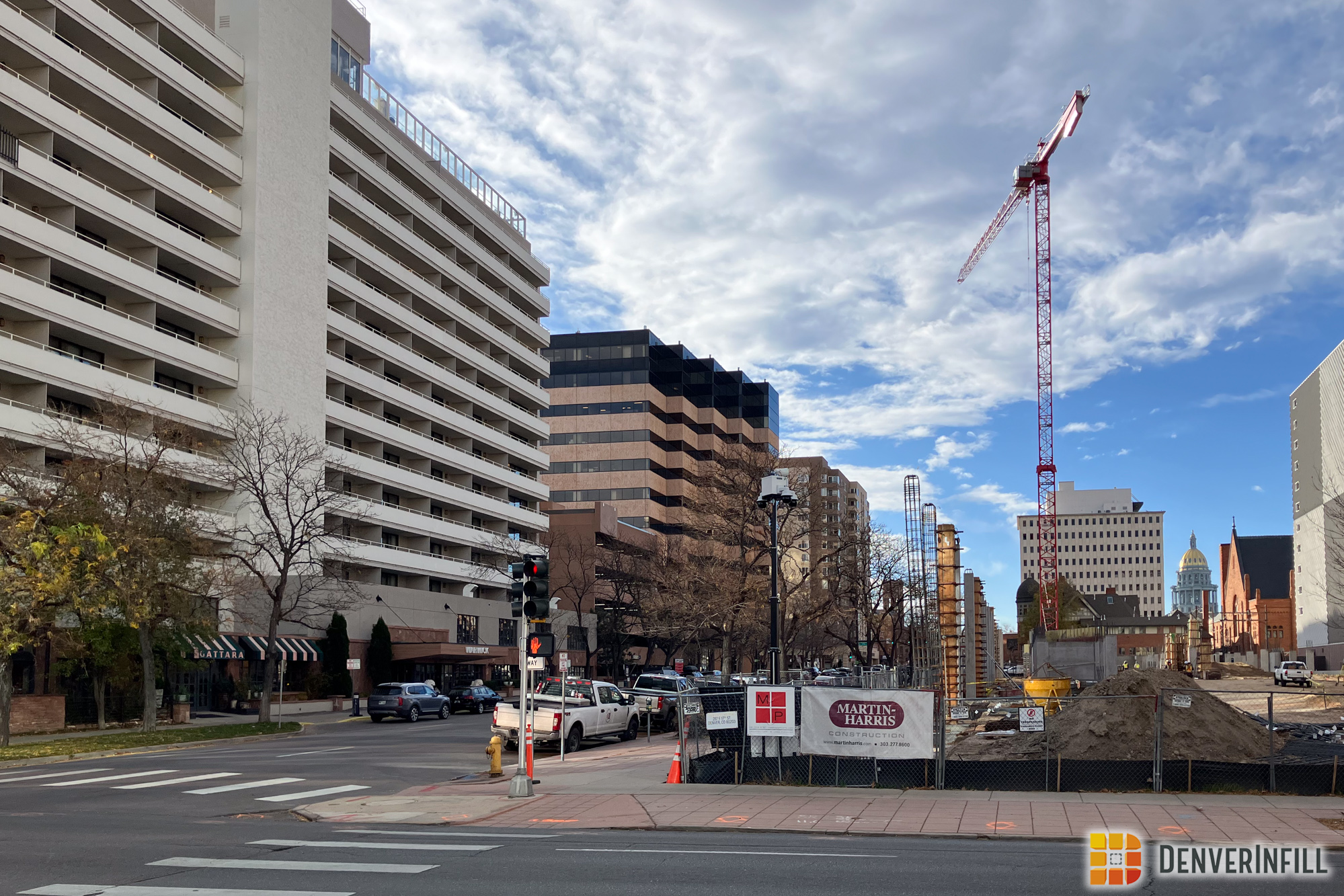
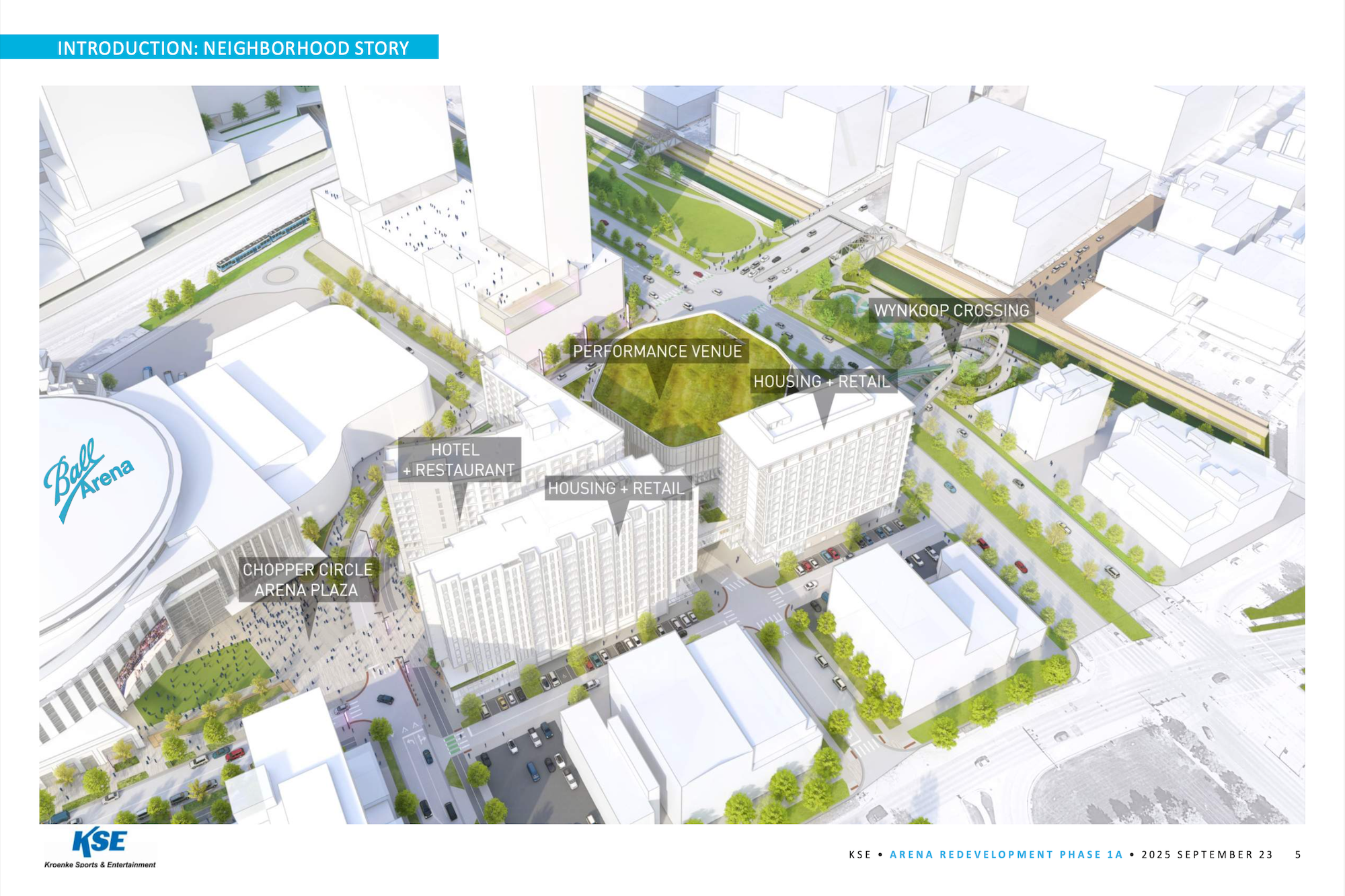
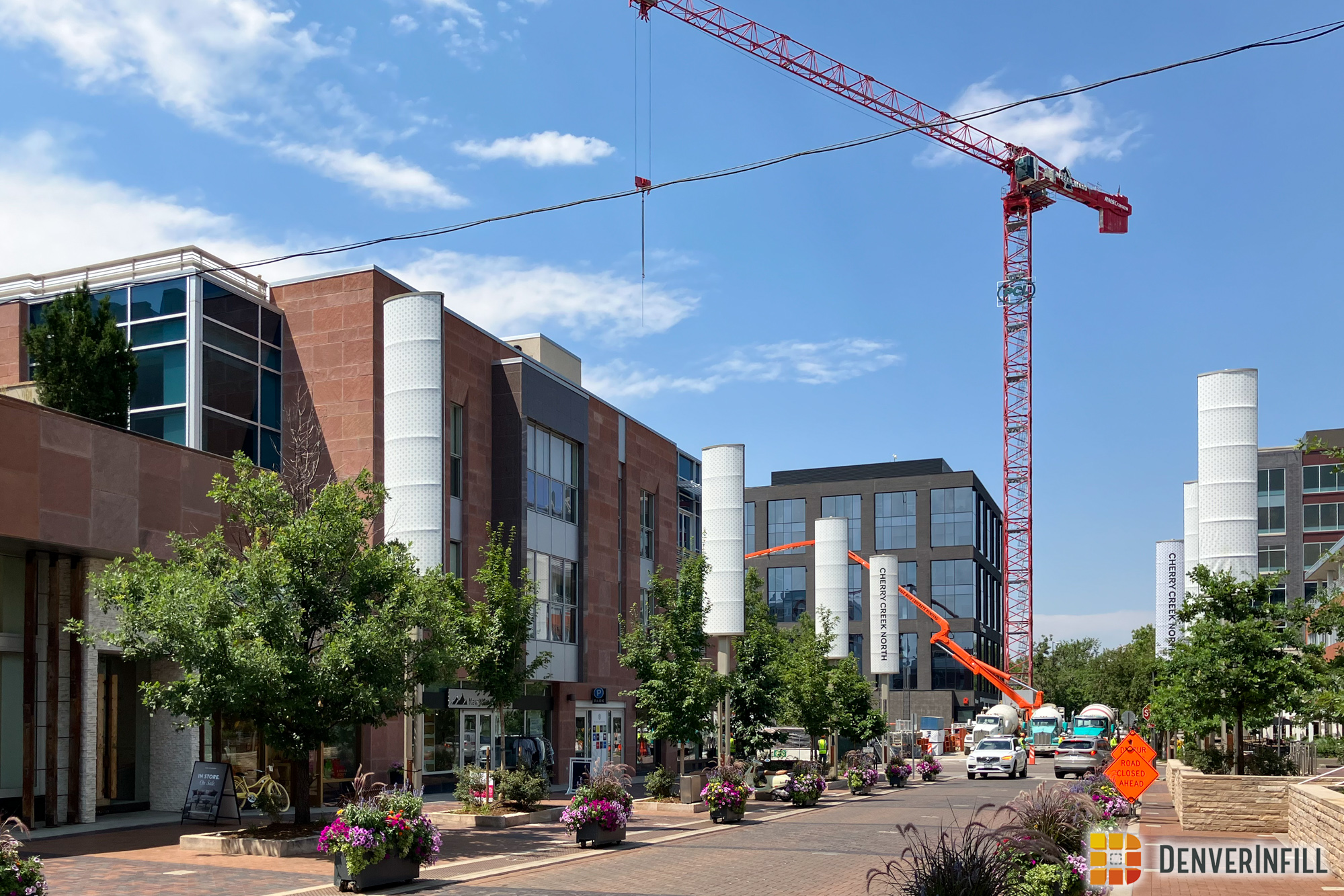
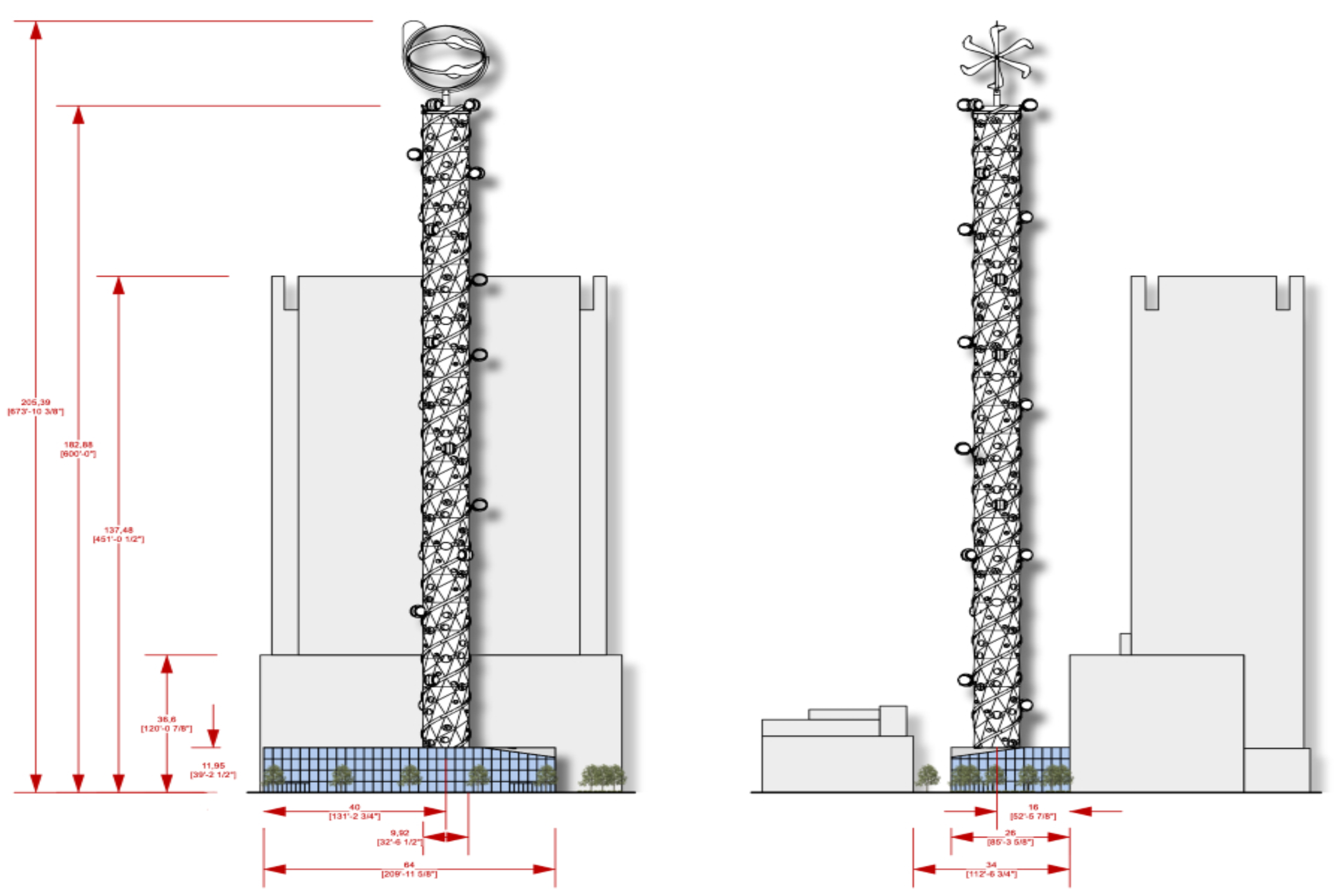


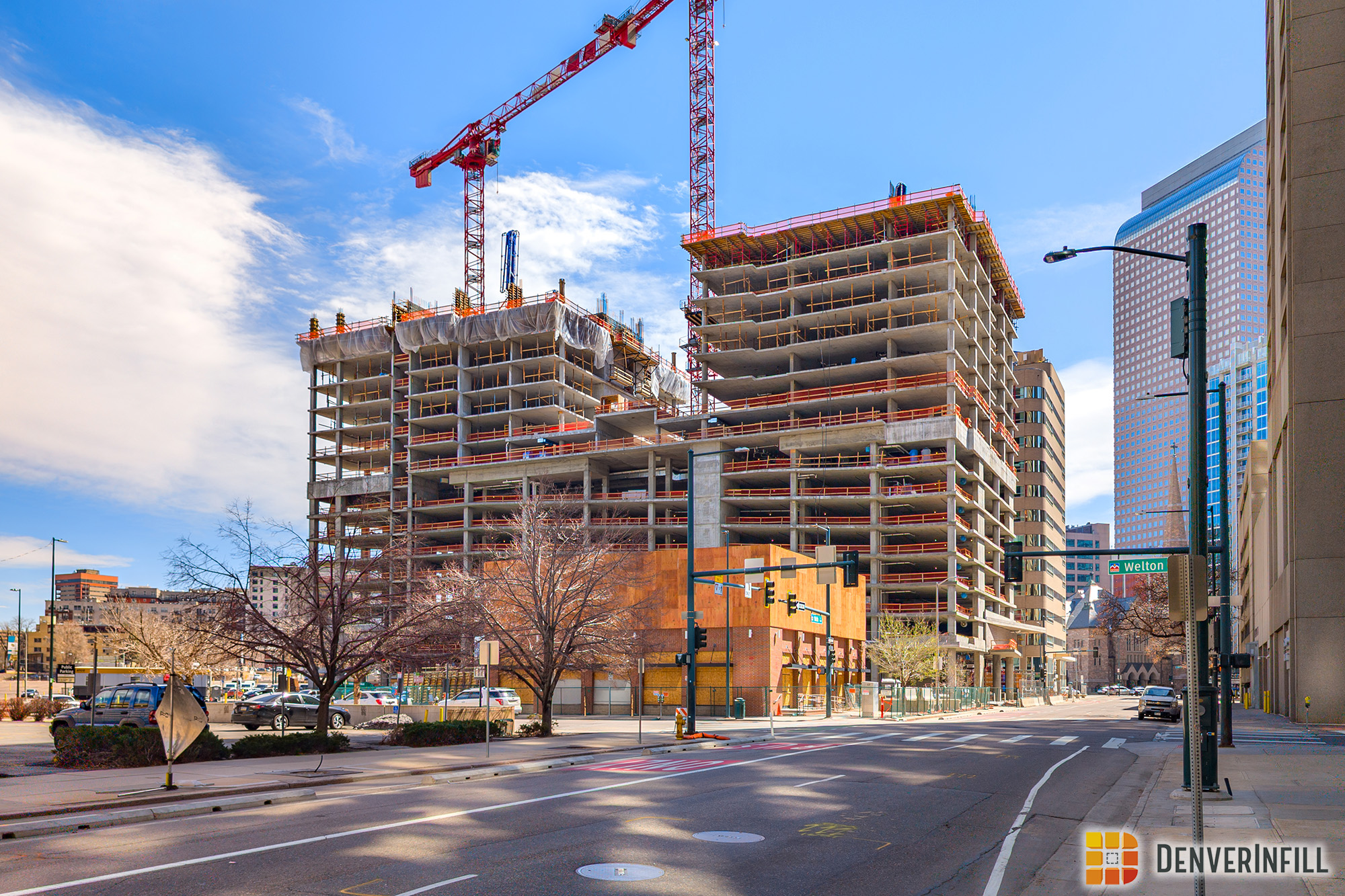


Thanks Andy, great reporting and analysis 🧐
I don’t think 475 17th street building is unremarkable. I’ve always liked this building, its color and simplicity and how the solid curving brick walls play against the thin glass walls. Its not in your face like so many newer buildings.
Are you possibly referring to the Holiday Inn Express across the street the Brown Palace? It has curved corners. 475 is red and has straight corners. I think that neither of them have brick.
Answering everyone’s real questions here. Thank you so much.
An interesting analysis! It definitely makes sense to convert several office buildings to residential if possible.
I just feel like to have a true downtown resurgence, more drastic policies and re-zoning will need to happen. Denver has pretty high rent and lots of WFH transplants – which definitely hurts it compared to more reasonably priced, denser cities like Chicago or Philly. Even Louisville, KY or Minneapolis I’d guess have a lot better resurgence due to their fair cost of living, regardless of how dense they are in comparison.
What I mean by this is actually turning downtown into a human place VS a place for cars. Like legitimately repurpose 75% of road space downtown from personal automotive vehicles and turn it into transit only throughputs, housing (the roads definitely seem wide enough for 3-5 story mixed use development), or… nothing at all – just a wide pedestrian trail.
IDK, there are logistical problems to figure out, but if downtown Denver was essentially pedestrianized I have a hard time imagining a world where that doesn’t skyrocket downtown activity.
Great plan Eric. Hey, let’s just outlaw all cars from downtown, so you can live in your pedestrian utopia. Let’s add a moat and machine guns around downtown to keep out everyone while we are at it. That way those pesky suburbanites residing around Denver, who comprise over 2 million people, won’t be downtown to support all the restaurants and cultural facilities. Imagine how easy it will be to get a great table at a restaurant or a seat in the theatre, until most of them close due to lack of business. Great plan!
Weird sarcasm.
I think what he’s poorly getting at (if you’re gonna be sarcastic, use a trailing /s) is that limiting the ability for cars to reach downtown without first establishing more high density residential AND robust public transit availability would only serve to make downtown (as is) less accessible to those who don’t live downtown (a majority of the Denver metro’s population).
At least downtown has protected bike lanes, and traffic lights allow for diagonal ped crossings every cycle. I live downtown and feel pretty safe getting around as a ped or cyclist, but I need a car to get anywhere outside of downtown (aside for the superb A-line) because RTD isn’t able to get me to where I need to go in a timely and predicable manner. The only walkable “grocery store” to me is a Target.
I wish I didn’t need a car, but I’m just one person and my car was paid off a decade ago.
Eh. I like Eric’s vision better than yours. Most world-class cities today might be even more ambitious than what Eric is suggesting. As a suburbanite myself, the idea of being able to commute into town and have this large area of completely car free space of 6×6 blocks would incentivize myself to get into town more often – it would be amazing. Especially if it was transformed to be like the 16th street mall.
Only problem is you can’t do this overnight of course. Significant planning would have to be present. Getting commuters into this area could be difficult without the proper transportation options (an “easy” fix with a proper, request bus route or street car?).
Biggest issue is you would likely have to completely cut off parking to some buildings if you are truly going car free. I wouldn’t mind as long as the above requirement is filled, but the building owners would put up a pretty big fight to keep that from happening. It would render 1/4th -1/3rd of the building completely useless unless someone comes up with a cheap alternative use case for the parking garage.
Nobody tell this guy about Vail Village….
Great write up Andy, thank you. As an upper downtown resident myself it has been fun to track these projects. While they of course wouldn’t change the skyline of downtown, even half of these projects making it through the process and getting completed would drastically improve the vitality and feeling of upper downtown as a true neighborhood. Stores, bars, and restaurants will have more reliable business, and sidewalks and public spaces will feel alive even during evenings and weekends.
Regarding 475 17th St, is there any info on modifications/improvements Davis Partnership might make to the facade of the building as part of the project? The location at 17th and Glenarm is fantastic, I wonder if anyone would want to live in an unremarkable 1970’s office box.. Hopefully this is an opportunity to improve the aesthetics of some of our less appealing buildings downtown in addition to adding much needed housing.
Regarding 475 17th St, my guess would be “if it ain’t broken, don’t fix it.” Unlike the pink, windowless monstrosity at the south corner of 15th and Curtis that has been beautifully transformed with a glass façade, about half of 475 17th St’s façade is already windows. And the exterior of the building looks clean and tidy, if a little devoid of Victorian details like the University Building boasts, so I don’t see much compelling any significant modifications.
The planned renovation of the Symes Building can’t come soon enough; the building is really starting to look pretty bad. Off the subject for a bit here, but the Mall redesign looks great (at least for the block or two that is now open). Lots of trees and planters and places to congregate. Alas, still a a lot of empty retail, but baby steps……..
$1,700 a month for a sub-300 sf apartment at the Art Lofts. That’s insane.
Very exciting! Thanks for this writeup!
I am curious as to why this blog appears to carry so much weight within the downtown Denver development community cooperative, yet I always only find only a handful of participants commenting. I would think there would be so many more as if to reflect a larger body of interest with so many living and working downtown. Is that around 150,000? So I question it’s validity as far as a consensus of what would be possible as a reflection of that amount of people in and out or living downtown. I might speculate that there are quite a few business owners, if any are left after the mall is finally finished. But then people think their idea of turning downtown into a car free pedestrian mainly environment with what, adding homes to TOD outside of downtown is going to propel them inward? And no wonder central downtown becomes a ghost town when 10,000 housing units is the best you can do to fill the streets with pedestrians. Most real pedestrian oriented cities have far more people living downtown. I agree with GC that choking out drivers from the suburbs isn’t going to make it a dynamic self contained community either. Downtown Denver has hardly ever realized itself as the center of the Rocky Mountain region in more than a couple aspects. It may have to hand that baton over to another city in this state if another city so decides to become more aggressive about attracting on a regional sense of the front range. Please do better research though concerning the suburban population it’s almost twice what you approximated. There is a regional force, naturally whether that’s supposedly disregarded as an integral part. From my observation the kind of change some experts were hoping for is not coming to bare and I’m afraid the ‘region’ is going to outgrow the central service downtown has to offer the constant regional influx. And that can be primarily reflected in much of the parking that has been erased to hopefully persuade other modes of travel. Unbelievable amounts of investment in that downsize. Another reason retail won’t locate to most of downtown is people can’t find logic in buying more than you can fit in a backpack. Thank you.
The ability to comment is shut off after a certain period of time, otherwise you’d see more comments on other posts.
I am a native Denverite forced to move out dut to the oil and gas crash in the 80s. I’ve moved back twice since then. I even developed Aspen Grove Shopping Center between my junkets out of state. Something (politicians? COVID? Cost of living? All of the above?) has wreaked havoc on my beloved City. It no longer has the appeal nationally it once did for relocation, it’s dead at night, Utah is kicking our ass in all aspects of excitement in its business community. This article only serves to remind me how depressed Denver really is and no medication or cannibas is going to bring it out. This is generational.
I genuinely hope DI will make some posts regarding the 19-to-1 disparity between new apartment and condo builds (respectfully) in Denver and Colorado broadly. While I’m very much in the “build more housing” crowd, I think there’s a lot of misunderstanding about whats actually being built on high density zoned residential. Specifically the fact that apartment homes do not add to a region’s real estate inventory, but condos do. Multi-family developers opt for apartment complexes because they aren’t subject to construction defect law like condos are.
When condo HOA’s are brought up as a reason to not buy one in Denver, its almost certainly related to a building constructed in the 1970’s who’s HOA’s (to varying degrees) dropped the ball with proactive maintenance and upgrades for years on end and are having to play catch up at the expense of current owners. Anyone in a condo built after 2005 (few and far inbetween) may be paying $500-700/mo in HOA, but it includes personal utility usage, fiber internet and TV, and likely a pool and gym that you’d be paying 3x/mo to get at a private gym compared to its share of the HOA fee. Plus everything gets fixed on time, and future remodels and upgrades are budgeted for. 1970’s era condo owners are paying $1200+/mo so they can raise enough money just to replace the elevator that came with the building 50 years ago.
If and when 5-over-1’s get converted to condos, I foresee hearing a lot of complaints about building quality and assessments because they were never built to be condos in the first place. Even for apt high rises, need look no further than The Grand (since rebranded as Jasper Towers) debacle.
Denver really needs more condos to add more inventory to the housing market, otherwise the suburbs will continue to spread out and flat-style living will only be possible thru renting.
I thought a hotel was proposed for the University Building?
Eagerly waiting for the August 2024 Round-up (any updates).